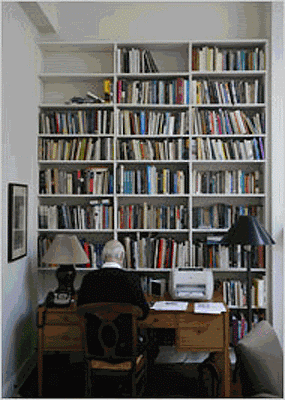Walter Benjamin, perhaps searching fragments in archives for “Some Motifs on Beadelaire”
at the Bibliotheque National de France, Paris.
Martin Heidegger, perhaps doing a final review of Building Dwelling Thinking in his office
Francois Baudrillard, perhaps taking break after writing The Beaubourg Effect.
Richard Sennett, perhaps pondering identity in his working space.
Michel Foucault in his office, perhaps submerged in Panopticism.
Credits: Image of Benjamin, by Gisele Freund, Heiddeger by Pillippe Lacou-Labarthe, Image of Sennet by the NYT, Image of Baudrillard by J. Lane, Image of Foucault from Portail Michel Foucault.





















.jpg)
.jpg)
.jpg)